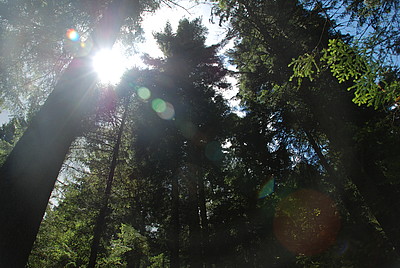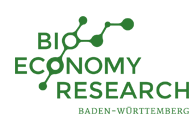BioPotential - Regional availability of lignocellulose as a primary raw material in Baden-Württemberg

The replacement of crude oil by renewable resources in a growing bioeconomy requires knowledge about quantity, quality and possible supply chains of lignocellulose. A prerequisite for the economically feasible and sustainable conversion of lignocellulose into bio-based products is the provision of the primary material at acceptable costs and with minimal negative effects to the environment.
The objective of our project therefore was to develop a concept and implement an exemplary survey and analysis of the availability of lignocellulose as a primary renewable resource. On a regional basis, we aimed to find optimised locations for conversion plants. Our focus was mainly on forests, but also included woody residues, short rotation plantations, and trees outside forests. We applied innovative remote sensing methods to assess the quantity and quality of lignocellulose in Baden-Württemberg. Statistical models were developed to estimate the distribution of wood stocks. In addition to that, we investigated timber utilisation. Our logistics module uses geographic information systems to model and optimise the supply chain.
Results from three study areas have been published
- Assessment of timber stocks at high spatial resolution (Maack et al. 2016)
- Woody biomass from trees outside forests based on remotely sensed object detection (Maack et al. 2017a)
- Regional potential and positioning of conversion plants (Maack et al. 2017b)
We assumed as a future scenario, skimming 50% of the lignocellulosic biomass potential (the rest remains for conventional use), consisting of mixed species (broadleaved and coniferous), a maximum distance for transport of 40 km and supply to conversion plants using 500000 t of fresh biomass annually. We were able to show that the potential for lignocellulose supply in Baden-Württemberg is theoretically high. The economic potential, however, is very restricted since the occurrence of material from trees outside forests is scattered and therefore difficult to harvest, while timber from forests has been almost completely allocated to conventional utilisation already. The bioeconomy will inevitably have to compete with these products, most likely with those that use low quality timber, particularly the energy sector. In cascade chains, energy recovery will take place only at the end of the lifetime of a bio-based product.
| Project title | Regional availability of lignocellulose as a primary raw material for Baden-Württemberg: A contribution to capacity design, site selection and sustainable supply of raw materials for future biomass-based conversion |
| Institution | University of Freiburg, Chair of Forest Operations, Chair of Remote Sensing and Landscape Information Systems |
| Research group | Dr. Marcus Lingenfelder, Dr. Joachim Maack, PD Dr. Thomas Smaltschinski, Prof. Dr. Barbara Koch, Prof. Dr. Dirk Jaeger |
| Project status | completed |
